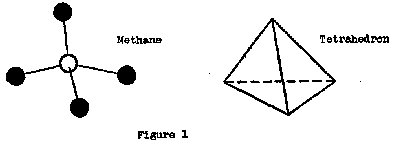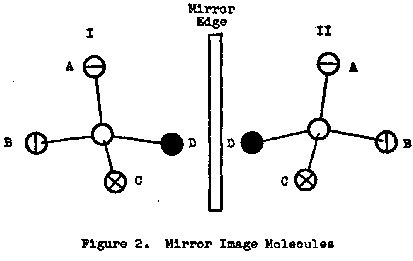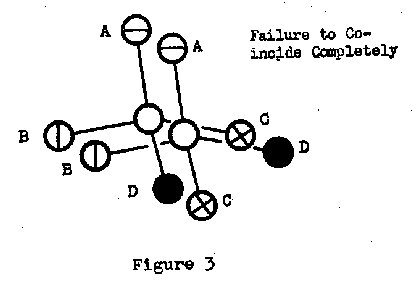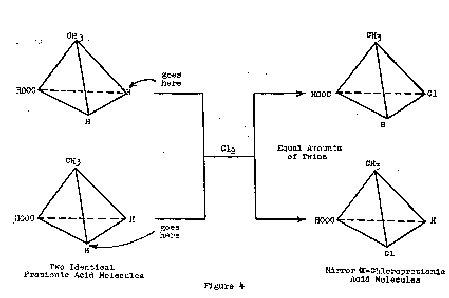 Science
in Christian Perspective
Science
in Christian Perspective Science
in Christian Perspective
Science
in Christian Perspective
From: JASA 5 (September
1953): 3-6.
Certain Christians are altogether too complacent in their disregard for facing science as it actually is, rather than as they would like it to be. Consequently, .Such completely untruthful statements are often made -as, "scientists no longer believe in evolution" or "a finite, expanding universe has come into disfavor". ,This reveals dangerous misconceptions. Persons responsible for such statements sometimes have a feeling that because they adhere to a literal Biblical interpretation of creation, and because God would certainly be all-knowing about such matters, they, too, have a knowledge of all scientific answers. Furthermore, they frequently have little regard for the problems confronting a scientist who is actually a Christian. That scientist may know of the inherent problems of his own particular field that cause untold difficulties, and yet he may also know that a Christian untrained in his particular field, is often wrong in criticizing the point of view of the scientist. Indeed, it is not true that scientists have abandoned the theory of evolution. On the contrary, the tendency on the part of an increasing number of scientists is to be so satisfied with the theory that they call it a fact, rather than a theory. There is little doubt but that scientific probing will strengthen, rather than weaken, the case for evolution. If one does not believe in a personal God, nothing else could logically happen from that viewpoint, other than emergence of life from chemicals on the earth through deterministic procedures and chance.
I Only recently has the importance of the chemical aspect come into general prominence. The biological sciences have been absorbed in studies of the life processes, biological and geological remains and their chronology. It is often forgotten that the life processes are chemical and physical, in their ultimate make-up. Biological changes must be accompanied by alterations in chemical and physical constitution. The problem has yet to be answered, "what preceded the single cell, if an evolutionary process did occur?". It is important, as Christians, that we look into pre-cellular evolution -not that we must necessarily believe in it, but that we must be aware of implications pertaining to it. Unchristian conclusions resulting from a mechanistic, evolutionary, outlook need to be counteracted. By viewing the pre-cellular problem, we can extrapolate to the underlying problems of all evolutionaky processes.
The origin of life is often casually pictured as a combination of chemicals under environmental conditions just right for the formation of the first molecule or combination of molecules, which complex could lead to a steady-state destruction and renewed synthesis of similar molecules or complexes. In other words, a chemical, reproductive system (in which elements of the atmosphere, soil and bodies of water, would combine to yield these substances that constantly undergo decomposition) is pictured as a precursor to cellular systems. Such a conception, however, fails to mention the most interesting and essential chemical features of the life processes. In order for life to be perpetuated, an unsymmetrical system must be set up. It is the inherent nature of this peculiar, unsymmetrical, system that it has the power to partake of symmetrical, twinned substances and select just one of the twins. That automatically abandons the other twin. In some instances, the unsymmetrical system can prevent the formation of one twin, and produce only the other. Such exclusion, through selection or prevention, produces further dissymmetry. It should be noted immediately that life depends primarily on carbon, and its compounds, for its maintenance to a far greater degree than on any other element. Compounds of carbon are named organic compounds and through them the life processes, of plant and animal life, function.
One of the simplest carbon compounds is "natural gas" (methane). It occurs above deposits of petroleum and is commercially trapped for use in ordinary cooking purposes. Methane consists of one atom of carbon and four of hydrogen . Now, each hydrogen is held to carbon by means of a pair of electrons, and each such pair is known as a chemical bond. The bond can be represented by a straight line, or wire, joining the carbon and hydrogen spheres. Carbon is in the center of a tetrahedron, with the four hydrogens projected toward the comers of the tetrahedron. (Figure 1)
 A tetrahedron is a pyramid with four triangular sides,
counting the bottom triangle as one of the sides.
A tetrahedron is a pyramid with four triangular sides,
counting the bottom triangle as one of the sides.
An odd thing happens when four different atoms or groups become attached to this carbon atom, instead of the four identical hydrogens of methane. Two different mirror image molecules can result. They are structurally alike in every respect, but one is the mirror of the other, just as the right hand is the mirror of the left. In other words. right hands are alike and will fit into a right handed glove. Only left hands fit correctly
 into a left handed glove. Similarly, it takes a second
right handed molecule to be exactly the same as the
first; the left handed molecule will have exactly the
same composition but will be different because it is a
mirror image. (Figure 2)
into a left handed glove. Similarly, it takes a second
right handed molecule to be exactly the same as the
first; the left handed molecule will have exactly the
same composition but will be different because it is a
mirror image. (Figure 2)
As molecule I looks in the mirror it sees molecule 11.
Now if molecule II is turned around and placed on top
of molecule I, the A and B atoms can be made to
coincide, but not the C and D atoms at the same time,
as shown in the overlapping molecules. By different overlappings, the C and D atoms could be made to
coincide, but the A and B atoms then would not. The
same thing is true of the right hand and the left. They
will coincide on any surface facing each other as
mirror reflections, but it takes two right hands to fit
each other completely, as previously explained by the
use of gloves. (Figure 3)

In the life processes, hundreds, even thousands, of
mirror imaged molecules are known to exist. This possibility can be seen by altering an A group to Z, or a
B group to W. An unlimited number of such adjustments is permissible. Particularly important are the
proteins, carbohydrates and fats. The startling revelation is that the Creator has often carefully selected
just one of twinned molecules, and has discarded the
mirror twin. In other words, there could be a twin
world, so to speak, of humans made up of mirror
molecules of proteins, carbohydrates and fats. Those
twin-moleculed humans, of course, do not exist but had
everything else in nature been of the mirror forms,
those humans could function in every way as we do, without a single exception. In order to see this, in a manner that will not obscure the situation, it will be necessary to take certain liberties in simplifying matters. Suppose a human functions entirely on proteins, carbohydrates and fat& Had the Creator chosen the mirror molecules, a namuh would result (simply human spelled in reverse to represent, as concisely as possible, the mirror imaged individual). He would be composed of snietorp, setardyhobrac and staf.
As an additional aid in understanding the functional nature of these mirror substances, it will be convenient to isolate ~ some pure, liquid, natural nicotine from tobacco. Then by known chemical reactions, synthetic, mirror, enitocin can be prepared in the laboratory. Both will analyze for exactly the same percentage of carbon, hydrogen and nitrogen, but their molecules will be mirror images of each other. It has actually been found that a very small amount of pure nicotine is lethal and will kill a human in an amazingly short time. The same quantity of enitocin will not because it is not nearly so poisonous. By observing the lists of the two humans tested (I and ID, it can readily be seen that the behavior of the two should be different since those lists add up differently with nicotine and enitocin.
Human (I) Human (II) Namuh (III)
Proteins Proteins Snietorp
Carbohydrates Carbohydrates Setardyhobrac
Fats Fats Staf
Nicotine Enitocin Enitocin
(deadly) (not deadly) (deadly)
Imagine that the Creator suddenly deposited a namuh on the earth. This namuh could breathe our air and drink our water and behave just as we do, as long as he did not touch our food (he could live only on doof). If we injected nicotine into namuh, he would live. However, if we injected enitocin (which is not poisonous to a human) into this narnuh he would die. Look at list III. Notice that it is the complete, reversal of list I. Therefore namuh would behave toward enitocin just as a human behaves toward nicotine. By looking back at the tetrahedral, mirror molecules, it is exactly what would be expected.
This simple little scheme has utmost significance to a Christian. From the standpoint of an agnostic evolution, the most vital question is this. How did nature separate those twinned molecules? This leads to the question, can chemistry bring about such a separation? The answer is yes, but it is not always easy. For consideration here, most important of the ways is probably seeding a solution of twinned molecules with a minute, small, crystal composed of molecules of just one of the twins, This causes that same twin type to crystallize from the mixture in the solution. Another method is to focus circularly polarized light on twinned molecules. Just one twin type- undergoes decomposition by absorbing that particular form of electromagnetic energy. The other twin remains.
In the ordinary syntheses of twinned molecules, they are formed in equal amount. For example, suppose .that alpha-chloropropionic acid is formed on chlorinating propionic acid in the usual way. Both twins result in exactly the same quantity. (Figure 4)
Each of the replaceable hydrogens of propionic acid is the same. There is nothing to cause one to be displaced more than the other in a large number of molecules. Now suppose that just one twin type of another compound, specially separated for the purpose (for instance one mirror form of see-butyl alcohol), is placed in the reaction mixture during the chlorination. It would be found that more of one mirror form of alpha-chloropropionic acid would result than the other. This is due to an unsymmetrical effect induced by the "untwinned" alcohol. Had both alcohol twins been present in equal quantity, no unsymmetrical effect would have resulted and the chlorination of propionic acid would produce equal amounts of the twins of alpha. chloropropionic acid. This sort of thing, in various modified procedures, has been established experimentally.
By carefully separating many, many, different sets of twins, and by using combinations of these separated twins, the Creator has produced the phenomenal photosynthetic process. Solar energy is thereby stored up in chemicals and is said to be converted into chemical energy. In this process, dextrose (in cellulose) is made from carbon dioxide and water. There are eight Pairs of twins, each single member of which has the same structural formula as dextrose, but not the same three dimensional relationships. Not only does the photosynthetic process give just dextrose, and not, the mirror image esortxed, but that process also essentially eliminates all of the other seven pairs of twins. Separation of twins requires a large amount of energy. Production of just one twin means that energy is stored, equal to the synthesis and the separation. This

is made possible by chlorophyll (a and b), the green coloring matter of plants, because it, itself, involves two different (a and b) separated twins, along with thioctic acid (a separated twin) and all of the other separated twins comprising the enzymes, coenzymes and the other necessary substances. Photosynthesis represents a concerted process of these separated twins, to form the single, separated twin, called dextrose. Thus a tremendous storage of energy is made possible.
For years, organic chemists have been studying the three dimensional nature of these chemicals. A steady stream of workers, from Karl Freudenberg of Heidelberg University, to Saul Winstein of the University of California at Los Angeles, has been building a substantial background of theoretical organic chemistry pertaining to such mirror systems. These chemists inherited a wealth of background from other scientists like Louis Pasteur, J. H. van't Hoff and Emil Fischer. The impact of this chemistry is now being felt in the biological sciences. It has been found that the membrane systems, the metabolism of food materials, and all of the important biological functions depend upon the untwinning capacity of already separated, and therefore unsymmetrical, systems, through the concerted action of untwinned members of the systems. Life depends on the independent twins. If unseparated twins, only, were present, it can safely be said that life could not exist on our planet. Separated twins are required and organic chemistry can supply them in sufficient quantity, no other field of chemistry that excludes carbon. Without the carbon atom, such inherent power would be lost.
This has many fundamental, practical and theoretical, implications. Mention of a few will be sufficient to permit an insight into the impact this information will have in the very near future, as the significance becomes recognized. It is only recently that the situation has reached a satisfactory status for the members of- the chemical and biological sciences to combine their efforts and understand the relationships of one science to the other in this respect. The science of stereochemistry (space-chemistry) has matured and its complicated technical terms have now become clearly defined. The biological scientists are spending time in this field and are applying this information to the study of genetics. It is now recognized that gene mutations involve alterations centered about separated twinned structures (for example, D-ribose and i)-2-deoxyribose of nucleic acids).
Atheistic evolutionists will naturally claim that from a simple, first, separation, of twins there developed the highly complex systems through natural processes of determinism and chance. A purely mechanistic basis of life is then a consequence of the separated twins in their concerted action. Primarily from cause and effect, and also chance due to electromagnetic energy of light from the sun, all of the complex and patterned life forms will be pictured to result. The diamond back of the rattlesnake and the yellow leptosidin pigment from the coreopsis would be due to the functioning of these separated twins, plus solar energy to keep life on the move. A personal God would hardly fit into such a picture. Those who develop a concept of a personal God, only because of a "first cause," are running contrary to scientists like Albert Einstein' of Princeton University or scientific philosophers like Hans Reichenbach2 of U.C.L.A. Indeed, these two men emphasize the urgency or necessity for abandoning the concept of a personal God.
A Christian need not fear the logic of these conclusions, but he needs to be aware of philosophical inconsistencies that can easily entrap him. The necessity for belief in a personal God cannot be proven on the basis of the physical and biological sciences, alone. Otherwise, very brilliant men would be forced to accept the demands of the logic involved. A God, that shows itself up solely in natural laws is not a God to whom one could pray. The periodic law of the elements and the atomic theory would lend a deaf ear because they are incapable of hearing. The Christian must base his belief upon the historic Christian faith. That faith is pragmatic, since it rests on the, records of sensory experiences of the personal dealings of God with man. Miracles were performed, but without a belief in them logic would demand an agnostic or atheistic alternative. If God raised Christ from the dead, and He was experienced after death as a living person in the sensory experiences of men like Thomas, then belief in a personal God is logical. If God did not raise Christ from the dead, there is no such thing as a personal God; a God of causal law and mathematical chance is the same as the God of Communism-no God at all.
The carbon atom with four different groups bonded to it is called the asymmetic carbon atom. It plays the leading role in dreams, thoughts, actions, genetic variations, reproduction and life in every functional way that exists. Add to this the God of a real voice spoken from an actual burning bush and a miraculous and literal experience of Mount Sinai, then a personality is behind it all; a soul is reasonable, good and evil have meaning, and free-will and predestination have their place. On the other hand, without the miracles of the Hebrew-Christian faith, the behavior of people cannot be called good or bad, except in so far as you set an arbitrary standard of good or evil; people would merely exhibit neutral behavior, just as a plant or some animal.
One of the complete theories of the origin of the universe3 involves these steps: (a) an original cosmic explosion of compacted matter; (b) development of galaxies and other matter pertaining to the universe as this Matter underwent constant expansion resulting from the explosion; (c) the production of our solar system, in our milky-way galaxy; (d) the origin of life through progressive chemical changes, particularly related to unwinding the twinned molecules. Not only does a completely mechanistic picture, due to cause and effect and chance, do away with the meaning of good and evil, but this picture leaves no room for volition or free-will. The most sensible arbitrary standard for good and evil would probably be related to progress toward maximum ability to control energy on the earth. In the final analysis, that would pertain to control of captured solar energy, including the most intelligent life forms, and things like water evaporated from one level and deposited at a higher level; both processes, of life development and transposition of water, would involve increases of potential energy through absorbed solar energy. According to an atheistic viewpoint, functioning of the human brain would represent the present maximum ability to control energy On earth, by the concerted processes of the human anatomy.
Acceptance of the miracle of the Cross gives logic to a personal God behind the scenes in the production of life, and it gives the only genuine assurance of eternal life. A Christian scientific philosopher uses exactly the same methods of logical reasoning as the un-christian philosopher, but his conclusions are vastly different because the Christian accepts the! historic Christian faith as authentic.
1. Einstein. "Out of My Later Years," p. 28, Philosophical Library, Inc. (1950).
2 Reichenbach, "The 'Rise of Scientific Philosophy," Pp. 302 and 315, University of California Press (Berkeley and Los Angeles, 1951).
3. The California school of scientists. See, for example, reprints of "The University Explorer," radio broadcasts of the University of California (Berkeley and Los Angeles; 1951-53): The Theory of Relativity: The Origin of the Universe; The Origin of the Earth.